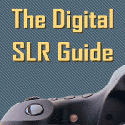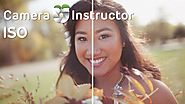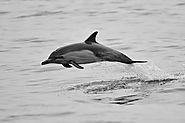-
About
- About Listly
- Community & Support
- Howto
- Chrome Extension
- Bookmarklet
- WordPress Plugin
- Listly Premium
- Privacy
- Terms
- DMCA Copyright
- © 2010-2025 Boomy Labs


 phelan-edward2
phelan-edward2
Listly by phelan-edward2
Photography has always been an interest of mine, but never having had the knowledge or equipment, it's not a hobby I've been able to pursue.
I've played around with Polaroids and downloaded several image editing apps on my smartphone, but have always been keen to know more about the higher spec equipment. Recently, I made the leap from observer to amateur and bought myself my first DSLR camera. I've learned a lot thanks to the great resources available online, and wanted to share the best of them.

It might sound overly simple, but a great place to start when getting to grips with your DSLR is to understand how it works. SLR stands for single lens reflex camera, and essentially means that you will be able to see exactly what the lens sees. This is because the DSLR uses mirrors to direct light from the lens to the viewfinder (which is the bit that you look through to take the photo).
Of course, there is a lot more to the process, but as a beginner, I’ve found that understanding the very basics to the DSLR mechanism and the functions on the camera have provided me with a solid foundation to build on.

One of the best bits of advice that I received from the pro camera shop that sold me my DSLR is to gain a solid understanding of the 3 pillars of photography. The first of these is aperture. As a relative beginner, I’d never even heard of the word aperture, so I knew I had a lot to learn.
Essentially, aperture refers to the size of the hole that light travels through in to the camera. In photography these are measured in f-numbers, or f-stops, as explained in this helpful video. The bigger the hole, the more light that is let in to the camera which impacts the depth of field. This means that the background of the image can be seen in as much focus as foreground objects. However if you use a smaller f-stop lens, then less light will be reflected in to the camera, which means only objects in the foreground of the image will be in focus.

Once I had a basic understanding of aperture and shutter speed, I now needed to get to grips with ISO, and found this video really useful.
Very simply, ISO is a measure of how sensitive your camera sensor is to light. I’d already learnt how to control light with aperture and shutter speed, but every photographer worth his salt needs to know how to manipulate ISO to work with the other settings. For example if you’re working in a lower light, you might need to increase your ISO settings to increase your camera’s sensitivity to the light.
It’s also crucial to understand that the higher the ISO the grainier your picture will become. This video features some great examples of a photograph of a sunset with increasing levels of ISO. As I quickly learned, it’s all about finding the balance.

One of the other founding principles of photography is shutter speed. This article refers to the shutter as the ‘curtain’ that opens to expose the camera sensor to light when you hit the shutter button. The speed at which the shutter opens and closes to allow light through the lens aperture has an effect on movement in your photograph.
A very fast shutter speed will freeze your image at exactly the second the photo was taken, whereas a slow shutter speed can give you a blurred effect if the object is moving. There is of course a lot more to learn about shutter speed, namely how you can set it manually and how it is measured. I’ve had lots of fun playing around with different shutter speeds when taking ‘action shots’.
